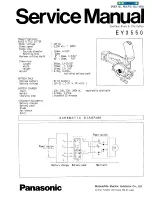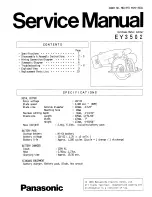
5
6)
Disconnect the machine from the power source and make sure that there are no hindrances by
manually turning the cutting blade.
7)
Make sure that the removable guard works properly (no hindrances).
8)
The guard must be installed and it must be in good working order. While the machine is disconnected
from the power source, check the operation of the guard and make sure it works properly.
9)
When changing the cutting blades make sure that the surface of cutting blades and flanges is clean.
Make sure that the securing nut is fastened securely. Make sure that the nut is not overtightened.
10)
Do not start the machine if the cutting blade contacts the processed part.
11)
Do not cut when holding the tile with your hand, make sure that the tile is securely fastened in the
guide bar.
12)
Make sure that there is enough space for taking the smaller piece of the tile being cut to the side.
Failure to meet this condition can result in the cut fragment being jammed by the cutting blade.
13)
Do not cut more than one tile at a time.
14)
Do not cut fragments which are too small and which do not enable fastening them securely on the
guide bar and keeping hands at a safe distance from the cutting blade.
15)
Make sure that there are no foreign objects on the machine bench.
16)
In case of binding of any objects in the machine disconnect it from the power source to remove the
jammed objects.
17)
Do not remove the jammed object while the machine is still working.
18)
Do not allow the machine to work without water. The absence of water in the tank results in cutting
blade overheating which leads to the breakdown thereof and incorrect tile cutting.
19)
Do not try to modify the machine or its auxiliaries.
20)
Do not overload the machine – it must perform its job; absence of overload reduces the wear of the
machine and of the cutting blade, it increases its work efficiency and service life.
21)
When working on the machine use ear and eye protection.
22)
Work on the tile cutter in waterproof protective clothing.
23)
Decorative surfaces should be cut with the tile cutter using the dust shield and a plastic waterproof
shield.
24)
Any modification which could lead to a change in the original characteristics of the machine, for
example, rotational speed or maximum diameter of the cutting-off wheel may be carried out only by
the manufacturer of the machine who shall confirm that the machine is still in conformity with the
safety regulations.
25)
Place the tool in a flat and stable surface, free of obstacles (except materials to be cut) and adequately
lit;
26)
Always check correct rotation of tool;
27)
Always prevent any contact with the rotating tool;
28)
Use no cutting-off wheels with a maximum operating wheel speed less than the rated spindle speed of
the machine;
29)
Precautions must be taken for mounting, clamping and removing the cutting-off wheels, in particular:
i.
Set the control device to the "off“ position;
ii.
Separate the machine from its energy source by unplugging the main power supplies
30)
The area shall be cleared of everything which may hamper the working action;
31)
The correct mounting of the guards shall be verified.
32)
for safety reasons each damaged (cracked) tool has to be replaced.
RESIDUAL RISKS:
Despite proper use, some residual risk factors cannot be completely excluded. Due to the construction and
structure of the machine, the following events may occur:
1)
Intervention in the diamond blade in operation.
2)
Contact of the diamond blade in the unprotected area.
3)
Ejection of coins and pieces of coins.
4)
Ejection of a defective diamond blade tip.
5)
Hearing damage if adequate hearing protection is not used.






































